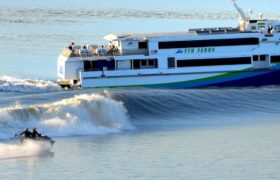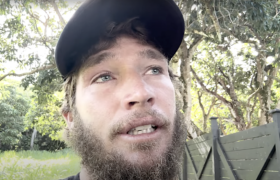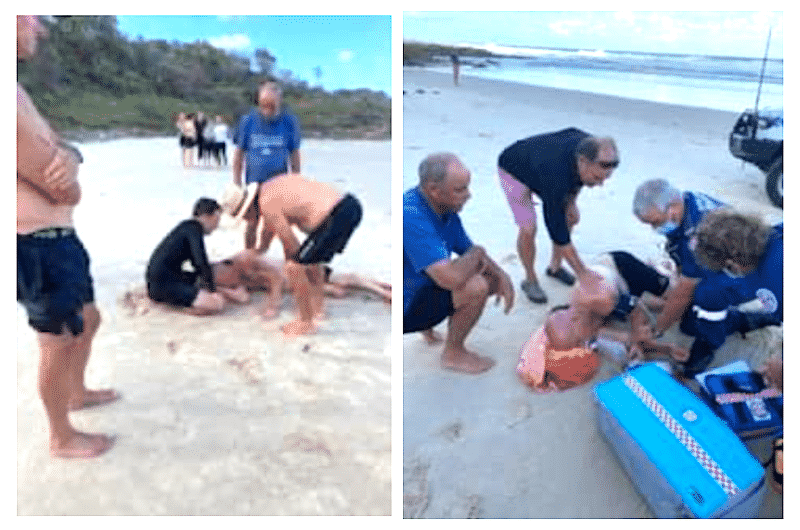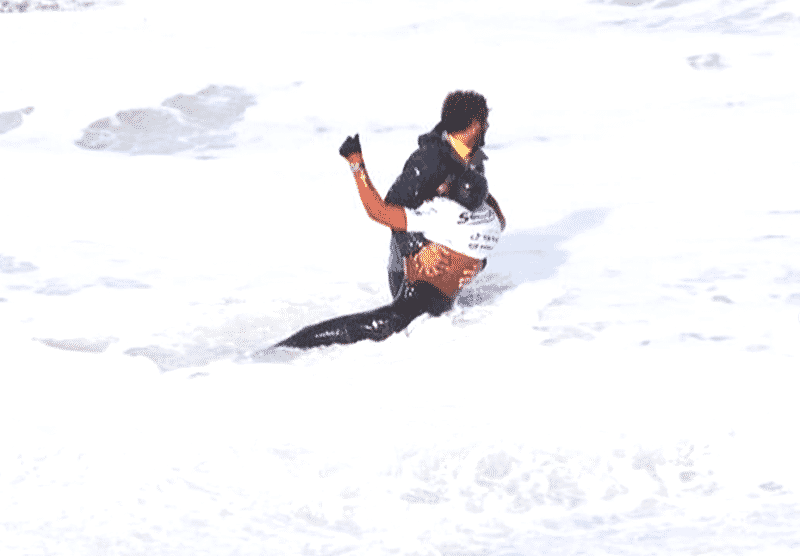“I felt people grabbing me, I heard voices. My head was so hot. I couldn’t use my arms or legs…"
The Angourie-based surfboard shaper Will Webber, brother of concave pioneer Greg Webber, has revealed he nearly drowned two weeks ago and only minutes after successfully rescuing a drowning child in wild cyclone surf.
Will says he was watching the surf with a couple of pals, as he does every day, when he saw a dad and his daughter caught in a rip at Spookies, a dramatic righthand ledge just north of the more famous Angourie Point.
Fifty-two-year-old Will says he ran the 250 metres to the water’s edge, saw the kid going under, dived in and swam into the zone.
“I knew she didn’t have oxygen and she could get brain damage,” he says.
By this time, another shaper, Luke Short, had paddled into the lineup on a mini-mal.
The pair got the father-daughter combo onto the rocks.
“Then I turned around to Luke and said, ‘Now I’ll show ‘em how it’s done’ and went to swim over the bank,” says Will. “I forgot it was an east swell and how much water was in the bay. I’d been fasting and I’d lost a lot of weight and was starting to get cold quickly. I was getting pounded by these relentless sets. I’d come up and there was only two seconds before another wave. And I was in a hell rip going out to China and getting belted and belted. And then I started worrying about sharks ‘cause it was so murky and yucky. I was going out to sea and I thought, I can’t beat this. I started to get weaker and weaker and, finally, I went, fuck it, I’m going to have to do it, I need help. I figured as soon as someone saw me waving, I could lie on my back and go out to sea and wait for the coastguard, that’s if they could get out. Trouble was, it was too choppy to lie on my back and I started to get heavy. Later, I’d look at my board shorts and see that the pocket was open, this big pocket.
“Then I looked over and saw Luke Short two hundred metres away. I was thinking, fuck, hurry man. He didn’t look to be getting anywhere. He knew he had one shot at getting me. If he got stuck, or if he duck dived and lost the board, which he’d grabbed without a leash, we’d both be stuck. Right then, the biggest sets of the arvo came in. Got two six-footers on the head. Oh, man, I was thinking, get in here quick. I couldn’t get near the rocks. It was bloody close. I don’t think I could’ve made one more set. My last two breaths were like gulps into my cheeks, not even into my lungs.
“Finally, Luke got me and I grabbed him around the neck like a vice. When the wave picked us up I started strangling him, then the wave overtakes us and I’m drowning and Luke feels me starting to faint and then he does this reverse jiujitsu double leg lock around me. We wash up on the beach with this massive surge.
“I felt people grabbing me, I heard voices. My head was so hot. I couldn’t use my arms or legs. I was spewing so they put me in the coma position. After a while the police turned up and they had to lift me up like a dead body and carry me to the ambulance.
“The ambo’s came, shot me full of stuff and put me on 100 percent oxygen. Spent four hours in hospital, lungs x-rayed, had to wait for the lactic acid to come down.”
At nine pm, Will was released from Maclean hospital, “Oh, man, nine o’clock and I’m standing in the streets of Maclean, in boards, freezing cold. I went from the penthouse to the shithouse.”
That night, sleep didn’t come easy.
“I was laying there with a god’s-eye view of it, trying to work out what went wrong. I go to that beach every day. My Mum’s memorial chair looks straight out there. I was saying to Dad, it was like being a heavyweight fight you knew you shouldn’t be in but you know you can get through it somehow. I was holding on for that, keeping enough oxygen to work with. I definitely didn’t give up, but the lights were getting dim. It was fucking… it was really bloody close.”
Check out Will’s boards, here, and buy his debut novel CHUD (“Thirty-three pages of addiction and debauchery!”), here.






